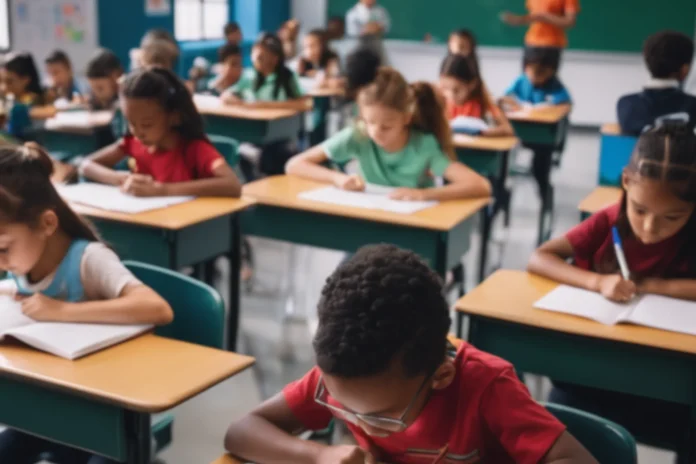High school girls visited AstraZeneca in Gaithersburg for a field trip to explore the power of multilingual education. This insightful experience, aimed at overcoming linguistic and cultural barriers, ignited a passion for science and exemplified a significant shift towards inclusive education that surpasses language restrictions.
Exploration at AstraZeneca
In the halls of the AstraZeneca complex in Gaithersburg, MD, a group of high school girls went on an extraordinary life-changing field trip centered around the essence of multilingual education. Their teacher, Ms Munoz, who prefers teaching them all science subjects in Spanish, took them to this unique and different place filled with brilliant scientists performing amazing experiments to shatter linguistic barriers and excite a new passion for science in these girls.
Significant Barriers to Science Education
The girls enrolled in the bilingual immersion program mostly felt science distant and confusing, as they belonged to immigrant families and science is an English-dominated subject. Confused by myths and misinformation about science fed to them by their ancestors, teaching them in Spanish was not enough; breaking the cultural and linguistic barriers controlling these bright minds was also crucial.
AstraZeneca’s Impact
Students who aren’t native English speakers often find themselves at a disadvantage, not just linguistically but culturally. At AstraZeneca, these bright girls met scientists from many ethnicities, participating in fascinating experiments and gaining insights into careers. The experience highlighted the transformative shifts in the global scientific landscape, underscoring the significance of embracing multilingual education to bridge linguistic and cultural gaps for a more inclusive learning environment.
English Dominance in Scientific Research
Historically, English replaced several languages, including French and German, in scientific research publications during WW1, and as a result, many aspiring minds whose mother tongue is different are left behind. This practice led to a need for more diversity and opportunities for non-native English speakers. However, contemporary times witness a welcome shift. Across the globe, concerted efforts are underway to usher in an era of multilingual education by translating scientific content into multiple languages, ensuring accessibility to education in one’s native language. Researchers like Grace Kago from Kenya and organizations like Mandram in India are trying to communicate scientific knowledge in native languages.
Scientific Content in Native Languages
Taking advantage of the opportunity, Kago started her own YouTube channel during COVID-19, providing diverse information in her local language, Kikuyu, to create a bridge between science education and non-English speakers. Mandram, an India-based organization co-founded by Maggie Inbamuthiah, focuses on scientific communication in Tamil, Kannada, and Hindi. For Inbamuthiah, it’s not just about language; it’s about empowerment. “The colonists left us feeling that English is a superior language,” she says.
Perception Change in the USA
Even in the United States, the number of public schools offering bilingual programs has nearly tripled, reflecting a broader acceptance of multilingualism and diversity in education. According to Okhee Lee, a professor in childhood education at New York University, the shift in terminology from “limited English proficiency students” to “multilingual learners” exemplifies a fundamental change in perception.
Igniting Passion for Multilingual Education
Fortunately, these new approaches, grounded in the principles of multilingual education, are transforming the way science is taught. The focus is shifting from textbooks to practical learning to improve skills among children. Science is becoming an activity, not just a subject, regardless of anyone’s language proficiency. The young girls whose minds had been confused by myths and misinformation found inspiration in AstraZeneca researchers. This interaction sparked the passion for science in these young minds.
This change isn’t just about words; it’s about making scientific knowledge accessible to everyone through multilingual education. The journey to more inclusive scientific learning has started, where everyone’s voice matters and education has no language barriers.



